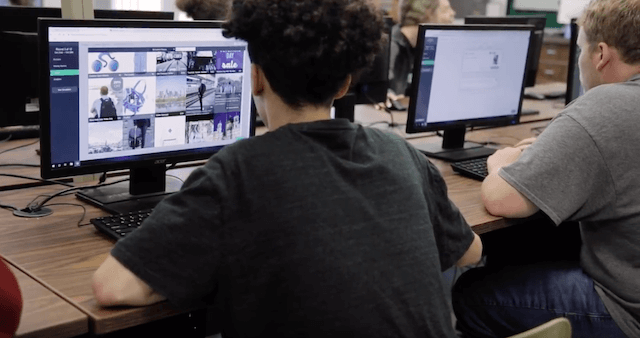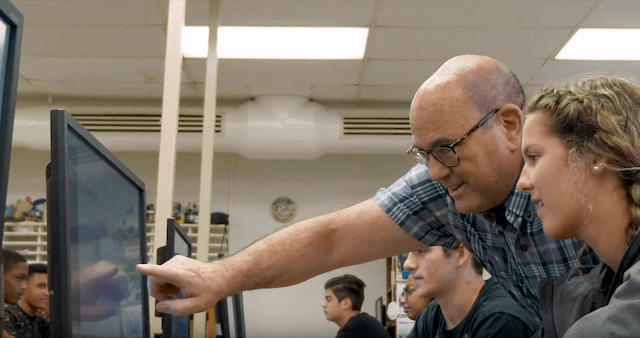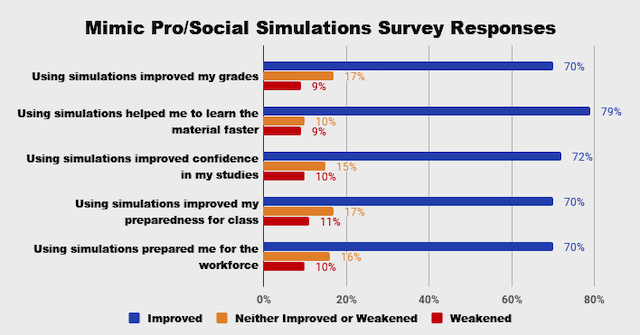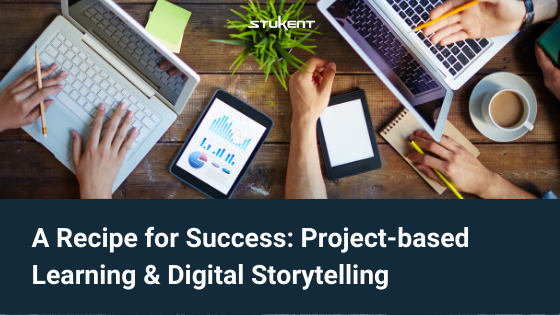Your classroom hums with the meticulous click, click, clicking of keyboards. What would appear to be a usual Tuesday in the classroom is anything but. Twenty-six students have transformed into social media marketers at the click of a button. They are not memorizing vocabulary words or writing essays. They are managing ad budgets, scheduling posts, and navigating the tumultuous waters of social media marketing.
Simulations allow students to act as protagonists of hypothetical stories, and by doing so, students build invaluable skills that prepare them for today’s complex workforce. Simulations combine the power of digital storytelling with project-based learning. Students are able to make connections between the concepts they are taught in class and the real world.
In a survey of over 1,800 students who used simulations in the 2017-2018 school year, 71 percent reported that simulations prepared them for the workforce. Pam Kantack, a teacher at Shelley High School in Idaho, said that simulations give students opportunities to build skills they can use to get jobs: “They don’t get that in normal classes … they don’t see the real world value. In [simulations] they do.”
Why Digital Storytelling Works
The process of sharing stories via digital formats is simply a modern take on the age-old act of storytelling. Humans have relayed experiences to one another for thousands of years, and although the formats have changed, we keep doing it. Why?
In Jonathan Gottschall’s book, “The Storytelling Animal: How Stories Make Us Human,” he explains, “Human minds yield helplessly to the suction of story. No matter how hard we concentrate, no matter how deep we dig in our heels, we just can’t resist the gravity of alternate worlds.” In fact, “when we experience a story, our minds are churning, working hard.”
Aristotle identified seven elements of powerful storytelling:
- Plot: a challenge is overcome
- Character: detailed character descriptions
- Theme: an overarching obstacle or end goal
- Dialogue: what people are saying
- Melody/Chorus: a chorus connects with emotions
- Décor: the physical environment
- Spectacle: plot twists and unexpected insights

Digital storytelling has the capacity to capture each of Aristotle’s elements, sometimes even allowing the viewer or reader to become the underdog. This is the case for simulations. Listening, watching, or reading a story is one thing, but becoming part of it is another. Today’s educational landscape can transform entirely with the help of simulations. The realistic aspects of learning can be reintroduced to modern pedagogy in K-12 and beyond via simulated experiences.
Integrating Project-based Learning via Simulations
According to Purdue’s, “Essential Readings in Problem-Based Learning,” when project-based learning is used, it must be the foundation of a curriculum, and it must allow students to exercise a high level of autonomy, solve realistic problems, access helpful resources, collaborate, and reevaluate.
Much like Aristotle’s elements of effective storytelling, project-based learning essentially builds a situation in which students must become personally involved with the plot of a project. There is an overarching issue that causes students to overcome personal challenges by solving realistic problems. This learning model allows students to become the protagonists of their own stories within the boundaries of the project at hand.
Simulations provide a realistic, safe place for students to take charge of their narratives. Pilots, mining operators, military personnel, even healthcare professionals have used simulations for years to practice their crafts without causing real damage. In fact, an article from the Patient Safety Network states, “A systematic review of 21 studies over 15 years tested the impact of the use of simulated patients. The authors concluded that well-constructed simulation programs for physicians, nurses, and pharmacists led to lower rates of drug administration and preparation errors, better compliance with checklists, and improved detection of medication errors …”
Let’s say you’re teaching a personal finance course, and you want students to see what it’s really like to pay bills, budget, and save. There is no realistic way you could provide manageable funds for your students, and it would be foolish to give them free reign of an actual budget. But, a personal finance simulation would allow them to experience the effects of unexpected medical costs and monthly car payments on a virtual budget.
Stukent offers specialized simulations for high school and higher ed on subjects including digital marketing, social media marketing, marketing analytics, and personal finance, allowing students to do everything from act as digital marketers and analytics interns for hypothetical companies, to manage virtual budgets of their own.

Increased Student Engagement
The current state of education has been debated for some time, and it appears the majority agrees that the system is in need of a few changes. The Global Partnership for Education says, “Mistaking good teaching with successful teaching has led policymakers to emphasize and place value on information that students can recall and put into practice on formal assessments.” While tests, readings, assignments, and PowerPoint presentations provide benefits of their own, they are missing the realism that digital storytelling and project-based learning can provide.
As education has become a widely available resource, it has also leveled the playing field and made it harder for students to stand out from their peers. Students need hands-on experience to rise above the competition. They need skill mastery, concrete knowledge, and problem-solving capabilities that memorization and testing simply cannot provide. As an ancient Chinese proverb says, “Tell me and I forget, teach me and I may remember, involve me and I learn.”
David Cornella used the Mimic Pro simulation during his time at California Polytechnic State University. He was able to use his experience from the simulation to land an internship with Adobe and, later, a job as an associate account strategist for Google. David said the simulation allowed him to show companies he had marketing experience. “It was just a huge leg up in all of my interviews,” David said.
Simulations provide a personalized experience in which students can be the authors of outcomes, while at the same time practicing decision-making, conflict management, and collaboration. Simulations allow students to take part in deep learning, as opposed to surface learning that only requires memorization. According to the previously mentioned survey of students who used simulations, 79 percent of students reported that using simulations helped them learn material faster, and 72 percent said using simulations increased their confidence in their studies.

Furthermore, the University of Saskatchewan explains that deep learning is “understanding what’s really going on, learning the deeper or underlying meaning of the material.” Take David Kolb’s Experiential Learning Cycle for example: “Effective learning is seen when a person progresses through a cycle of four stages: of (1) having a concrete experience … (2) observation of and reflection on that experience … (3) the formation of abstract concepts and generalizations … (4) [testing a] hypothesis in future situations, resulting in new experiences.”
Steve Smith, a teacher at Eastern Alamance High School in North Carolina, said of the simulation he used, “[It] gets students that I was not able to reach before. They are now actively engaged. Getting the whole class involved is so much easier than it used to be, and I can go so much deeper with the lessons …”
As a combination of digital storytelling and project-based learning, simulations have the capacity to improve student engagement and success.
Stories stick. They influence people, build connections, and support learning. Allowing students to author their own stories, to practice autonomy via simulations, is far more influential than telling or teaching. After all, we want students to do more than remember. We want them to act on their feet, understand the consequences of their decisions, and learn from their mistakes.






